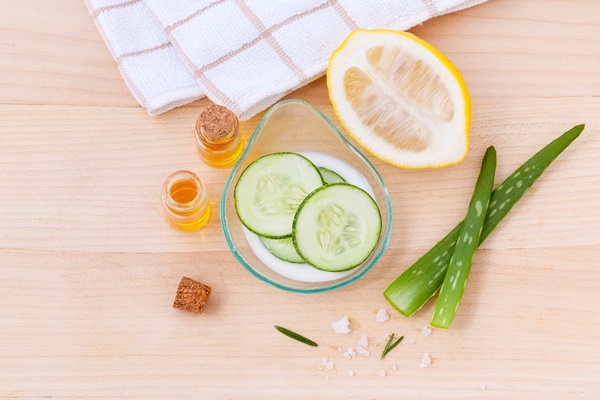Trendy new anti-aging compounds come and go at a breakneck speed in the world of skincare. Some may garner a lot of attention and excitement, when it comes to tried-and-true anti-aging ingredients. There's a relatively limited list of effective solutions that specialists will tell you genuinely work. Each of the top substances rejuvenates skin in somewhat different ways, and each has its own set of benefits and drawbacks. Here's everything you need to know, as well as some of the best anti-aging products to try.
Using a broad-spectrum sunscreen
We understand that this is technically a product rather than an ingredient, but bear with us. There's no use in wasting your time or money on additional anti-aging components if you're not applying sunscreen on a regular basis. It's a proven fact that sun exposure is one of the leading causes of all aging symptoms, from spots to wrinkles and everything in between. As a result, appropriate, everyday sun protection is a must, which is why broad-spectrum sunscreen is included on this list.
Sunscreens with SPF 30 is the recommended daily value, and it's crucial to note that reapplication is also necessary. Mineral and chemical broad-spectrum sunscreens are available; the former sit on top of the skin and deflect the sun's rays, while the latter sink into the skin and prevent the rays from hurting the cells. It's a question of personal opinion, but mineral solutions are less prone to irritate sensitive skin. According to some of the most recent FDA results, zinc oxide and titanium dioxide, two of the most regularly used mineral sunscreen components, are both safe and effective.
Retinol
"Also known as vitamin A," this is one of the most potent skin-transforming substances. It's part of a wider class of medications known as retinoids, of which there are numerous prescription and over-the-counter alternatives, though, to keep things simple, they all operate in the same way
Retinol is an excellent anti-aging agent for targeting fine lines and sun damage since it accelerates the pace at which your cells turnover, i.e. it speeds up the exfoliation process. It's also good for fighting blemishes for the same reasons, so if you're dealing with adult acne, wrinkles and pimples, this one's for you. Learn more about acne treatment vancouver.
If it appears to be too good to be true, it probably is. Retinol has some significant drawbacks, including the fact that it can be extremely irritating to many people. You may assist reduce its unpleasant side effects (redness, flaking) by incorporating it gradually into your routine and sandwiching it between two layers of normal moisturizer. In addition, you just need a pea-sized amount for your entire face—more is not always better in this scenario. Because it becomes inactive when exposed to sunlight, it should only be used at night.
Ceramides
The skin barrier is the outermost layer of your skin, and its major function is to keep the good stuff (hydration) in and the bad stuff (irritants) out. In terms of anti-aging, the more moisturized your skin is, the younger it appears. Ceramides are a useful element to look for if you have eczema since they help keep irritants out. Ceramides are a beneficial component for any skin type because they have virtually no disadvantages. If you're looking for a product with ceramide and retinol ingredients you could try zo products.
Collagen
Collagen is one of the most important proteins in your skin, serving as the foundation for keeping it strong and firm, similar to the box spring beneath a mattress. The trouble is that our natural collagen production slows as we age, and to make matters worse, a variety of extrinsic factors (ahem, UV exposure) can contribute to collagen breakdown.
While it seems obvious that collagen would be an excellent anti-aging component, it's not quite that straightforward. Topically, owing to the fact that it's a massive molecule that's difficult to get into the skin. You may have also seen an increase in the availability of ingestible collagen recently; numerous tablets and powders have hit the market, boasting a variety of skin, hair, and nail advantages. Nonetheless, it is difficult for oral collagen to reach the level in the skin where it would make a difference.
Glycolic Acid
This acid, which belongs to the alpha-hydroxy acid family, is distinguished by having the lowest molecular size, allowing it to permeate the deepest into the skin, glycolic acid has the conventional exfoliating advantages of any AHA, gently breaking the connections between dead skin cells to enhance skin texture, tone, and pore size. But glycolic acid has another distinct anti-aging benefit: it increases levels of both collagen and elastin in the skin, so it can also help prevent wrinkles. Glycolic acid can be unpleasant for some people, especially those with extremely sensitive skin or when used in high doses, so use it gradually to give your skin time to adjust.
Lactic Acid
Another type of AHA is generated from milk and is often softer and less irritating than glycolic acid. It's a typical anti-aging ingredient in both light in-office peels and many at-home exfoliating creams, and it helps to leave skin looking more even and radiant. Furthermore, unlike many other exfoliating components, which can be drying if not used correctly, lactic acid has been demonstrated to increase the natural moisturizing properties in the skin. Keep in mind, though, that lactic acid will make your skin more susceptible to the sun, so you'll want to be especially vigilant and on top of your sunscreen game if it's part of your anti-aging arsenal.
Hyaluronic Acid (HA)
Hyaluronic acid, a moisturizing ingredient fan favorite, acts like a sponge, pulling water to and then holding it in the skin. This implies that it not only hydrates but may also help plump up your skin and fill in fine wrinkles because it can hold up to a thousand times its own weight in water. However, their advantages are just transient. Because hyaluronic acid is a naturally occurring sugar in our bodies (we generate it on our own until about the age of 20), it is relatively inert and unlikely to cause any skin issues. Just keep in mind that moisture is required for this anti-aging component to perform properly. In other words, slathering it on dry skin while sitting in the middle of the desert won't help. Applying hyaluronic acid to mildly damp skin or layering it with another moisturizer is your best bet. For better results try vivier products.
Vitamin C
The vitamin you take when you sense a cold coming on has skin benefits. It is not only an excellent antioxidant, aiding in the neutralization of skin-damaging free radicals caused by environmental factors such as sun and pollution, but it also interferes with the development of excess pigment in the skin, assisting in the fading of spots and discolouration. And, as if that wasn't enough, it also aids in the stimulation of collagen creation when used either topically or ingested. In relation to this there are some who are more sensitive to vitamin C than others and may experience irritation; it is also readily rendered inactive when exposed to sunlight and air.
Oil of Jojoba
Despite how popular facial oils have become, the concept might still be off-putting to certain people. However, jojoba oil is one of the greatest skincare oils available. Jojoba oil is derived from a nut-like pod of a plant and is biomimetic, which means it behaves similarly to the oil present naturally in skin. It's non-comedogenic, so it won't clog pores. It's also hydrating and soothing to dry, irritated skin. There is no reason to be concerned about breakouts. Jojoba oil also includes vitamin E, which implies it may have antioxidant effects and is anti-inflammatory. It also works great to moisturize your hair and scalp. For more information about pore reduction you could try gentle laser pore reduction treatment.








No comments
Post a Comment